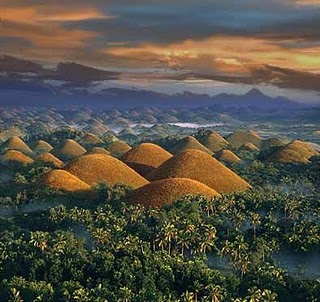In an area in the middle of the ocean are small islands surrounded by colorful corals, which are breeding grounds for a lot of fishes, whales, sharks, turtles, and birds.
 The Tubbataha Reef is far-famed internationally but otherwise locally unpopular. It is only a manifestation that this wonder is untouched and less explored, which is a good thing because exploitation always corrupts nature.
The Tubbataha Reef is far-famed internationally but otherwise locally unpopular. It is only a manifestation that this wonder is untouched and less explored, which is a good thing because exploitation always corrupts nature.
The Reefs are perfect example of the work of nature. It is a site for adventurous divers, and others who want to explore the beauty of the community made by marine living organisms.
It is also a UNESCO World Heritage Site, actually it is the first natural park in the Philippines included in the list.
What is the Tubbataha Reef?
The Tubbataha Reef is the general name of the area comprising two atolls (the North Atoll and the South Atoll), and a cay named Jessie Beazley Reef. The area is extensively named The Tubbataha National Park, or Tubbataha in short.
It is an atoll reef (meaning it is a circular island with a lagoon in the center) system which is home to a lot of marine species like dolphins, sharks, fish, turtles, and many others. The islands are also summer and winter homes to many migratory birds (some took refuge to this island for throughout the year).
The coral reefs in the park are considered the richest in the Philippines, of which 90% of all kinds of corals in the country could be found here.
The park covers an area of 130,000 hectares and reaches down to about 750 meters deep in the middle of the three atolls (the deep sides are open seas). The reefs themselves reach down up to 100 meter of corals.
Where can we find the Tubbataha Reef?
The Tubbataha Reef is in the middle of Sulu Sea (an area between Palawan and Mindanao Islands) in the Midwestern part of the Philippines. It is legally a part of the Palawan Province, southwest of Puerto Princesa, its capital.
The park is located in the multinational area called the Coral Triangle, which extends from the West Philippine Sea to the Pacific Ocean, covering much of the Philippines, Indonesia and Papua New Guinea.
How did mother nature mold this wonder?
Philippines being an archipelago is rich in marine life, which are brought by its warm waters. The Tubbataha Reef is a perfect example. Unlike other reefs, the atoll is circumferential.
Millions of years ago, a volcano (or volcanoes) was formed under the ocean. Marine life, like corals surrounded the volcano which became extinct. As the sea subsided, the corals formed an island around the volcanic island, which then started subsiding. The island became a lagoon and the surrounding corals became what is now the reef.
The Tubbataha Reef is a perfect example of an atoll, made more perfect by the continuous building of the rich biodiversity of the region.
 There are more than 7,100 islands in the Philippine Archipelago, all of which hold unending pristine wonders which make it a superb summer camp of tourists. Aside from the beaches and the tropical climate, Mother Nature has since favored this archipelago and has continuously made it a paradise.
There are more than 7,100 islands in the Philippine Archipelago, all of which hold unending pristine wonders which make it a superb summer camp of tourists. Aside from the beaches and the tropical climate, Mother Nature has since favored this archipelago and has continuously made it a paradise.





